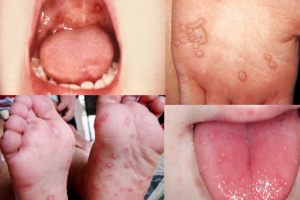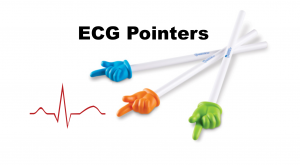Today on the emDOCs cast with Brit Long, MD (@long_brit), we cover the literature on evaluation and management of primary SBP.
Episode 110: Primary Spontaneous Bacterial Peritonitis
Background:
- End-stage liver disease with cirrhosis and ascites is a major cause of death worldwide.
- Primary spontaneous bacterial peritonitis (SBP) is one of the most common infections in those with cirrhosis and ascites.
- Definition: SBP is an infection of the peritoneal ascitic fluid without an intra-abdominal focus of infection.
- SBP accounts for over 30% of all infections in those with cirrhosis; present in 5-30% of cirrhotic patients admitted with ascites.
- Mortality rates per episode of SBP are 15-40%.
- Older age, recurrent episodes of SBP, hepatorenal syndrome, hepatic encephalopathy, acute kidney injury (AKI), concurrent GI bleeding, and higher MELD scores are predictors of worse outcomes.
- Commonly a monomicrobial infection with gram-negative bacteria like E. coli (50-90% of cases). Infection with gram-positive bacteria and multidrug resistant (MDR) bacteria are becoming more common. One study found that half of infections were community acquired, 25% were nosocomial, and another 25% were healthcare associated.
Risk factors:
- Upper GI bleeding: SBP can occur in up to 25-65% of patients with ascites and GI bleeding.
- Prior episode of SBP: recurrence rate of SBP after the first episode if the patient is not on prophylaxis is close to 70%.
- Others: ascitic protein concentration less than 1.5 g/dL, serum total bilirubin > 2.5 mg/dL, renal disease, serum sodium less than 130, malnutrition, refractory ascites, older age, and endoscopic management of esophageal varices.
- Literature concerning risk with PPIs is controversial.
Presentation:
- Classic presentation is abdominal pain or tenderness, fever, and altered mental status.
- Literature suggests 10-33% of patients are asymptomatic or only have mild symptoms. Clinician sensitivity for SBP based on bedside assessment is between 40-75%.
- Abdominal pain or tenderness is the most common and sensitive finding for SBP (90%), but no specific. Pain/tenderness is typically diffuse but may be subtle
- Fever is less than 40% sensitive, but specificity is over 90%.
- Mild hypothermia is normal in patients with advanced cirrhosis; consider lowering threshold for fever to 37.8 degrees C.
- Marked hypothermia is specific for SBP (> 90%), and it’s a poor prognostic finding.
- Approximately 50% have altered mental status, but it may be subtle.
- Nausea, vomiting, diarrhea occur in 30-70% of patients.
- Patients can also present with GI bleeding, AKI.
- Critically ill: hypotensive, tachycardic, may be hypothermic, may have paralytic ileus.
- Major takeaway: Consider SBP in any patient who comes into the ED with ascites. Also consider in those with cirrhosis and ascites plus fever, abdominal pain, worsening ascites, fever with no other source, AMS with no other source, GI bleeding.
Diagnostic testing:
- Diagnostic modality of choice is paracentesis to obtain ascitic fluid for cell count and culture.
- Ascites absolute neutrophil count (ANC) of > 250 cells/mm3 is diagnostic.
- Guidelines recommend performing paracentesis in patients with clinical suspicion for SBP or in a patient with cirrhosis and ascites who is being admitted for a complication of cirrhosis.
- One study suggested that each hour of delay in obtaining ascitic fluid was associated with a 3.3% increase in mortality. Paracentesis performed within 12 hours was associated with lower in-hospital mortality and shorter length of stay when compared to paracentesis performed within 12-72 hours (13% compared to 27%).
- Paracentesis is a safe procedure with a low complication rate (< 1%).
- Ultrasound can assist: confirm ascites, evaluate for best site, abdominal wall thickness, blood vessels along needle track.
- Send fluid for cell count and culture. If possible, inoculate the fluid into blood culture bottles (at least 10 mL per bottle). Increases sensitivity to > 90%. Make sure to use a different needle to inoculate the blood culture bottles.
- For the remaining fluid inject 1 mL into a purple top EDTA blood tube for cell count; send 2-3 mL for Gram stain in a red-top tube or sterile urine container.
- May consider sending fluid for total protein and albumin, glucose, and LDH.
- Reagent strips are available.
- Obtain blood cultures.
- May find anemia (GI bleeding, malnutrition, hypersplenism, alcohol use), thrombocytopenia (portal hypertension, hypersplenism), elevated total bilirubin and prothrombin time, hyponatremia (excess water intake), elevated AST and ALT, and elevated creatinine and BUN.
- CRP and procalcitonin have also been studied but should not be used to exclude SBP.
- Imaging with CT is not necessary in all patients, but consider in those with localized tenderness, severe pain, or critical illness.
Coagulopathy and Thrombocytopenia:
- Over 70% of patients with liver dysfunction have thrombocytopenia and/or abnormal coagulation panel testing.
- Literature suggests that patients with cirrhosis have a balanced coagulopathy due to reduced production of procoagulant and anticoagulant factors.
- The overall risk of bleeding with paracentesis is less than 1%, even with platelet counts less than 20,000 to 50,000 and elevated INR (> 8).
- Thrombocytopenia and elevated INR are not contraindications to paracentesis.
- Current guidelines recommend against routine assessment of prothrombin time and platelet count before paracentesis.
- Guidelines also recommend against routinely transfusing blood products to correct coagulation panel abnormalities; transfusion is associated with adverse events and does not reduce the risk of bleeding.
Management:
- Patients can rapidly progress to septic shock and multiorgan failure.
- Administer antibiotics after paracentesis if the patient has abdominal pain/tenderness, altered mental status, temperature > 37.8° C (100° F), or if the ascitic fluid ANC is > 250 cells/mm3
- Mortality increases by 8-10% for every hour delay in antibiotics for patients with cirrhosis and septic shock.
- For antibiotics, utilize local antibiogram.
- Most common first line antibiotic is a third-generation cephalosporin like ceftriaxone 2g IV daily or cefotaxime 2g IV every 8 hours.
- However, cephalosporins have become less effective; 20-50% of cases are due to MDR organisms.
- More recent data suggest that carbapenems are associated with reduced end organ injury and mortality in patients with nosocomial infections and those who are critically ill.
- In patients with shock, critical illness, end-organ injury, recurrent SBP, or recent hospitalization, administer a broader spectrum agent like a carbapenem (ertapenem, imipenem, meropenem). Piperacillin-tazobactam may also be used in place of the carbapenem.
- There is increasing prevalence of Staphylococcus aureus in patients with nosocomial SBP. If there are risk factors for MRSA or the patient has recent healthcare exposure, add vancomycin or linezolid.
- IV albumin is essential. Renal injury occurs in 30-50% of patients with SBP, and AKI is a major predictor of mortality. The mortality rate increases by 30 to over 50% if AKI is present.
- A 2013 meta-analysis found IV albumin was associated with 22.3% absolute reduction in risk of developing renal impairment (NNT 5) and a 19.4% absolute reduction in risk of mortality (NNT 6).
- Dosing is 1.5 g/kg of 20% albumin IV at the time of diagnosis and 1 g/kg IV 48 hours later.
Summary:
- SBP is an infection of the peritoneal ascitic fluid without an intra-abdominal focus of infection.
- Variety of causative organisms, including Gram-negative bacteria, Gram-positive bacteria, and MDR bacteria.
- Consider in any patient with liver disease and abdominal pain, worsening ascites, fever, altered mental status, upper GI bleeding, or if they’re being admitted with ascites.
- Diagnosis requires paracentesis; look for an ascites ANC > 250 cells/mm3.
- US can help determine the best site for paracentesis.
- Patients do not require routine transfusion to correct coagulation panel or platelet abnormalities prior to paracentesis.
- Treatment includes IV antibiotics and albumin.
References
- Long B, Gottlieb M. Emergency medicine updates: Spontaneous bacterial peritonitis. Am J Emerg Med. 2023 Aug;70:84-89.
- Biggins SW, Angeli P, Garcia-Tsao G, et al. Diagnosis, Evaluation, and Management of Ascites, Spontaneous Bacterial Peritonitis and Hepatorenal Syndrome: 2021 Practice Guidance by the American Association for the Study of Liver Diseases. Hepatology. 2021 Aug;74(2):1014-1048.
- Mattos AA, Wiltgen D, Jotz RF, et al. Spontaneous bacterial peritonitis and extraperitoneal infections in patients with cirrhosis. Ann Hepatol. 2020 Sep-Oct;19(5):451-457.
- Aithal GP, Palaniyappan N, China L, et al. Guidelines on the management of ascites in cirrhosis. Gut. 2021 Jan;70(1):9-29
- Marciano S, Díaz JM, Dirchwolf M, Gadano A. Spontaneous bacterial peritonitis in patients with cirrhosis: incidence, outcomes, and treatment strategies. Hepat Med. 2019 Jan 14;11:13-22.
- Angeli P, Bernardi M, Villanueva C, et al. EASL Clinical Practice Guidelines for the management of patients with decompensated cirrhosis. J Hepatol 2018;69:406–60.
- Long B, Koyfman A. The emergency medicine evaluation and management of the patient with cirrhosis. Am J Emerg Med. 2018 Apr;36(4):689-698.
- Arvaniti V, D’Amico G, Fede G, et al. Infections in patients with cirrhosis increase mortality four-fold and should be used in determining prognosis. Gastroenterology 2010;139:1246–56.
- Runyon BA. Monomicrobial nonneutrocytic bacterascites: a variant of spontaneous bacterial peritonitis. Hepatology. 1990 Oct;12(4 Pt 1):710-5.
- Koulaouzidis A, Bhat S, Saeed AA. Spontaneous bacterial peritonitis. World J Gastroenterol. 2009 Mar 7;15(9):1042-9.
- Chinnock B, Hendey GW, Minnigan H, et al. Clinical impression and ascites appearance do not rule out bacterial peritonitis. J Emerg Med. 2013 May;44(5):903-9.
- McVay PA, Toy PT. Lack of increased bleeding after paracentesis and thoracentesis in patients with mild coagulation abnormalities. Transfusion. 1991 Feb;31(2):164-71.
- Sigal SH, Sherman Z, Jesudian A. Clinical Implications of Thrombocytopenia for the Cirrhotic Patient. Hepat Med. 2020 Apr 14;12:49-60.
- Tripodi A, Primignani M, Mannucci PM, Caldwell SH. Changing concepts of cirrhotic coagulopathy. Am J Gastroenterol. 2017;112(2):274-281.
- Runyon BA. Paracentesis of ascitic fluid. A safe procedure. Arch Intern Med. 1986 Nov;146(11):2259-61.
- De Gottardi A, Thevenot T, Spahr L, et al. Risk of complications after abdominal paracentesis in cirrhotic patients: a prospective study. Clin Gastroenterol Hepatol. 2009;7:906–909.
- Kim JJ, Tsukamoto MM, Mathur AK, et al. Delayed paracentesis is associated with increased in-hospital mortality in patients with spontaneous bacterial peritonitis. Am J Gastroenterol. 2014 Sep;109(9):1436-42.
- Gaetano JN, Micic D, Aronsohn A, et al. The benefit of paracentesis on hospitalized adults with cirrhosis and ascites. J Gastroenterol Hepatol. 2016;31:1025-1030.
- Hibbert R, Atwell T, Lekah A, et al. Safety of ultrasound-guided thoracentesis in patients with abnormal preprocedural coagulation parameters. Chest. 2013;144:456–463.
- Mallory A, Schaefer JW. Complications of diagnostic paracentesis in patients with liver disease. JAMA. 1978;239:628–630.
- Mercaldi CJ, Lanes SF. Ultrasound guidance decreases complications and improves the cost of care among patients undergoing thoracentesis and paracentesis. Chest. 2013;143:532–538.
- Nazeer SR, Dewbre H, Miller AH. Ultrasound-assisted paracentesis performed by emergency physicians vs the traditional technique: a prospective, randomized study. Am J Emerg Med. 2005;23:363–367.
- Sakai H, Sheer TA, Mendler MH, et al. Choosing the location for non-image guided abdominal paracentesis. Liver Int. 2005;25:984–986.
- Runyon BA, Canawati HN, Akriviadis EA. Optimization of ascitic fluid culture technique. Gastroenterology. 1988 Nov;95(5):1351-5.
- Runyon BA, Antillon MR, Akriviadis EA, McHutchison JG. Bedside inoculation of blood culture bottles with ascitic fluid is superior to delayed inoculation in the detection of spontaneous bacterial peritonitis. J Clin Microbiol. 1990 Dec;28(12):2811-2.
- Runyon BA, AASLD Practice Guidelines Committee. Management of adult patients with ascites due to cirrhosis: an update. Hepatology. 2009;49:2087-2107.
- Albillos A, Cuervas-Mons V, Millan I, et al. Ascitic fluid polymorphonuclear cell count and serum to ascites albumin gradient in the diagnosis of bacterial peritonitis. Gastroenterology. 1990;98:134–140.
- Patel KP, Gallagher JP, Korbitz PM, et al. Performance of Leukocyte Esterase Reagent Strips in the Detection of Spontaneous Bacterial Peritonitis in Cirrhotic Patients: A Systematic Review and Meta-analysis. J Clin Exp Hepatol. 2022 Mar-Apr;12(2):519-532.
- Oliveira JC, Carrera E, Petry RC, et al. High Prevalence of Multidrug Resistant Bacteria in Cirrhotic Patients with Spontaneous Bacterial Peritonitis: Is It Time to Change the Standard Antimicrobial Approach? Can J Gastroenterol Hepatol. 2019 May 13;2019:6963910.
- Sofjan AK, Musgrove RJ, Beyda ND, et al. Prevalence and predictors of spontaneous bacterial peritonitis due to ceftriaxone-resistant organisms at a large tertiary centre in the USA. J Glob Antimicrob Resist. 2018 Dec;15:41-47.
- Piano S, Singh V, Caraceni P, et al. Epidemiology and effects of bacterial infections in patients with cirrhosis worldwide. Gastroenterology. 2019;156:1368-e10.
- Fernández J, Acevedo J, Castro M, et al. Prevalence and risk factors of infections by multiresistant bacteria in cirrhosis: a prospective study. Hepatology. 2012; 55:1551-1561.
- Friedrich K, Nussle S, Rehlen T, et al. Microbiology and resistence in first episodes of spontaneous bacterial peritonitis: implications for management and prognosis. J Gastroenterol Hepatol. 2016;31:1191-1195.
- Kim SW, Yoon JS, Park J, et al. Empirical Treatment With Carbapenem vs Third-generation Cephalosporin for Treatment of Spontaneous Bacterial Peritonitis. Clin Gastroenterol Hepatol. 2021 May;19(5):976-986.e5.
- Piano S, Fasolato S, Salinas F, et al. The empirical antibiotic treatment of nosocomial spontaneous bacterial peritonitis: results of a randomized, controlled clinical trial. Hepatology. 2016; 63:1299-1309.
- Sasidharan Nair GV, Mathen PG, Pillai MG, et al. Initial choice of antibiotic in recurrent spontaneous bacterial peritonitis: A retrospective study. Int J Crit Illn Inj Sci. 2019 Oct-Dec;9(4):187-190.
- Wieser A, Li H, Zhang J, et al. Evaluating the best empirical antibiotic therapy in patients with acute-on-chronic liver failure and spontaneous bacterial peritonitis. Dig Liver Dis. 2019 Sep;51(9):1300-1307.
- Salerno F, Navickis RJ, Wilkes MM. Albumin infusion improves outcomes of patients with spontaneous bacterial peritonitis: a meta-analysis of randomized trials. Clin Gastroenterol Hepatol. 2013;11:123-130.
- Long B, Gottlieb M. Albumin Infusion for Spontaneous Bacterial Peritonitis. Am Fam Physician. 2022 Oct;106(4):Online. PMID: 36260890.
- Batool S, Waheed MD, Vuthaluru K, et al. Efficacy of Intravenous Albumin for Spontaneous Bacterial Peritonitis Infection Among Patients With Cirrhosis: A Meta-Analysis of Randomized Control Trials. Cureus. 2022 Dec 30;14(12):e33124.








